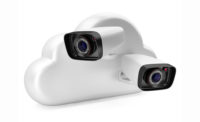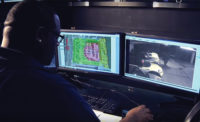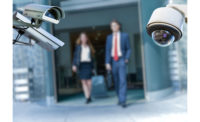Video monitoring just may be the answer to decreasing revenue from hardware-centric sales, DIY pressures and new market entrants offering monitoring for historical lows and no contract.
Video monitoring is a solutions-focused, consultative sale that tackles a host of different end user challenges. It comes in a variety of flavors — and can be custom-designed to the application and market. Video monitoring can originate with cameras, access control or other systems or sensors — and audio is often a key piece. For monitoring operations, it is technology-, labor- and capital-intensive and necessitates scripting, education and training on human interaction and intervention to accurately identify events and provide the type of response that elicits a positive outcome.
Video can generate regular and profitable recurring monthly revenue (RMR) and make the customer stickier, keeping attrition extremely low, says Jerry Cordasco, client development manager for security integrator and managed services provider Tech Systems Inc., Buford, Ga. Cordasco says his company has zero attrition with its video monitoring accounts, focusing on the customer and a solutions-based approach centered around providing “fanatical” customer service.
Tech Systems built its F.O.C.U.S. (For Our Customer’s Ultimate Satisfaction) Fusion Center several years ago at its new headquarters to address growing client needs and emerging video applications. It provides 24/7 support — from centralized dispatch of service technicians, to remote diagnostics, to monitoring of access control and video surveillance systems.
“Sticky services like video more deeply embed you in the DNA of your client,” Cordasco says. The company’s focus, he adds, is high-end access control system management, leveraging access control monitoring with video for managed services RMR.
“In our world, it’s a little different,” he says. “We only offer video services to existing customers, monitoring access control accounts and verifying events with video. We monitor access control 24/7, for things like door forced open and door propped open, things that are a security vulnerability but users typically don’t pay attention to. When we get a door alarm, we use video to see exactly what’s going on. Monitoring access control and using video to verify and respond to the alarm substantially increases the value of the system.”
A Long-Term Play
With the use of and stability of analytics, motion detectors, sophisticated software and audio there’s a new wave of video monitoring emerging and the RMR looks increasingly appealing. There’s a caveat, however. It has to be done right, under a solid business plan and with the knowledge that it’s much more labor-intensive.
“It’s not a product; you are selling a solution and a service,” says Rush McCloy, CEO of Eyewitness Surveillance, Hanover, Md. “It’s a consultative sale and about understanding the customer’s needs and pain points. We use video monitoring to optimize business, operations and employees.”
Eyewitness handles the entire solution, including project management, installation, service and monitoring. “Monitoring is security-based,” he explains. “The signals come in, you watch the video and respond with audio. Audio works to deter through voice-downs. We also have managed video and do video audits and analysis — for inventory damage or slip and falls, for example.”
Eyewitness President RT Arnold agrees that video monitoring is a longer-term outlook to profitability. “Video is a very long-term play. The margins are there if it’s done well and you are deliberate. Pricing is not just a cost-plus basis. It’s taking margins into consideration and having differentiated services to bring a blended margin. The permeations of pricing are extremely broad.”
Brandon Niles, director of operations, Acadian Monitoring Services, Lafayette, La., says what worked for his company was keeping video and traditional alarm centers separate. “We were very fortunate to have a strong team in place when we got into video 15 years ago and since then we knew we had to keep it separate. Video monitoring requires video analysts that intimately know the sites they’re monitoring. We believe that if we ask them to jump back and forth between video alarms and traditional alarms they will never become familiar enough with the video sites to be effective at their jobs.”
Acadian has seen a substantial increase in residential video monitoring. “With video analytics becoming less expensive, often included with camera systems at no cost, and the general public becoming a little more knowledgeable and accepting of video analytics, we’ve seen alarm dealers have success pushing this service as a way to differentiate themselves from the big nationals and DIY companies that really stay away from this area,” Niles says.
Rapid Response is one of the largest providers of video monitoring services and understands the training, education, philosophy and mindset it takes to be successful in a time-intensive operation. “The way we do everything in monitoring operations is based on skill sets and teams,” says Morgan Hertel, vice president of technology and innovation, Rapid Response Monitoring Services (RRMS), Syracuse, N.Y. “Part of the training is video operation, and it’s a higher level tier training so you end up with a highly skilled team whose job is to manage video services.”
Video monitoring touches the customer daily and needs to be at its highest levels to achieve tangible and sustainable value. Chris Brown, vice president, SureView Systems, Tampa, Fla., says there are three prevalent types of video monitoring: video verification; video detection and response; and remote guarding. Video detection and response is experiencing the most growth in video monitoring operations, he adds.
Opportunities for RMR
From advanced use of specific analy-tics, deeper health checks with reporting, access control and other monitoring of devices through integrated hardware, to ticketing systems that provide real-time information of the site conflicts where a disarm in a scheduled armed period would raise an alarm, there are over 2,000 diagnostics for the health and ticketing system available to report on through NMC’s Netwatch Cratos proprietary software, says Nicola Oakie, national sales manager-west, Proactive Video Monitoring, NMC.
“We are now in the realm of managed services beyond just video monitoring,” she says. “The opportunity is increased RMR, subscriber satisfaction and a stickier customer. The ability to go back to an existing subscriber and offer value-added services with video at all levels and at all site sizes is a tremendous opportunity.”
With video monitoring platforms, as well as integrations created by dealers to handle their various alarm panels, coupled with more powerful analytics in cameras — interoperability is enhanced. There are many different variables, starting with video verification — to concierge, video escort, intrusion, general health monitoring and business intelligence, according to Markus Scott, president and CEO of National Video Monitoring Corporation (NVMC Solutions), Marietta, Ga.
“Video monitoring is a faster way to grow RMR, but it’s capital-intensive. We’ve invested a ton of money into technology to expand the service,” Scott says. “We are leveraging technology to lower false alarms cost effectively and also offer third-party services to dealers through an affiliate program.
“Video monitoring is a business you have to be all in on,” he adds. “There’s more customer involvement along with higher labor components. It’s more to service the systems and there’s an emotional connection for customers, who we ‘touch’ regularly. It’s not easy to just add it to the RMR portfolio.”
The core business models that seem to be gaining traction are focused on solutions selling, providing more than security and yielding an experience the customer can’t live without.
“Our goal is to help the customer’s security posture by being proactive, ubiquitous and omnipresent,” says Daniel Forrest, CEO, Eyeforce Inc., Houston. The company’s remote guarding solutions are offered through a nationwide network of dealer partners.
“There are opportunities everywhere,” he says. “We encourage dealers to sell the outdoor perimeter style remote guarding because it is a premium service compared to basic alarm system verification. Some of the new things we are seeing are sites that have some level of government requirements for security (marijuana industry, chemical plant/storage facilities, etc.). We are also seeing an uptick in the replacement of guards at guard houses, like manufacturing plants with truck delivery entrances, gated communities and others because of the cost of labor.”
7 Steps to Building a Successful Video Monitoring Center
One rapidly emerging trend in the monitoring business is the offering of remote video monitoring and managed video services. As few as 10 years ago, only a handful of companies offered these services, but today the opposite holds true.
To be a truly successful managed/monitored video services provider, it is imperative to understand all services that are available, the value of each service to the client, how to deliver the service and how to price it. There are seven steps to consider in building a successful managed video services program.
- Define a menu of services. It is imperative to know exactly what business you want be in and what services you can deliver effectively for fair market value.
- Understand the technology. Know what products are right for certain applications and fully understand all features and facets of those products.
- Invest in the right tools for your center. Proper telephony and software are key to maintaining margin and driving the “next” level of service. Invest in tools that don’t limit your growth and partner with companies who have a track record of success.
- Create packages that are simple to sell and understand and then price each service to make them profitable.
- Dedicate sales personnel specific to your managed/monitored video services program. Hire good people with a sole focus and incentivize them to strive for success.
- Train, train, and train some more. Having a well-trained staff is akin to having a well-oiled vehicle. For example, operators need to know SOPs (standard operating procedures); supervisors should be trained on basic technical troubleshooting methods to eliminate situations that disrupt operations and workflows; IT staff should be trained in all aspects of core system management, technical integrity, disaster recovery etc.
- Build to be portable. Video has garnered the interest of big capital and venture capital and private equity money is available to help you grow in this area if you have a solid track record of performance in your current security space. When it comes time to exit, this largely overlooked item in the beginning can cost you millions in the end.
If a monitoring center wants to enhance the overall value of their business through managed video services, the strategy is to keep it simple. Scalability is key. Become a partner to your customer, not just a vendor — create that stickiness. Understand, and by extension, help your client understand everything that video and audio can do for them. — Contributed by Chris Brown, vice president of SureView Systems, Tampa, Fla.
Eyeforce offers a number of services, including video verification, video intervention, guard patrols, audits, escorts, monitored openings/closings, panic suspicion assistance, remote doorman, and live monitoring.
Whereas the monitoring is often a separate operation for central stations, when it comes to installations Advantage Security Integration, Houston, an Eyeforce dealer partner, believes video is no different than a burglar alarm system with regards to monitoring, according to Al Cantu, general manager.
“Our marketing to customers explains that they can take their reactive camera system, new or existing and make it proactive with Eyeforce remote guard services,” he says. “Their camera system investment can turn even a single camera into a live guard to protect their site.” Cantu, adding that the company is primarily leveraging video intervention and remote doorman services, says the service can integrate with dozens of systems, but typically when it comes to access control they simply tie into a relay for door or gate control.
“You no longer have to design expensive, complicated systems to provide remote guard service. With cloud technologies it can easily be applied to just about any camera system.”
Pricing Particulars
With so many different variables, setting RMR pricing for video monitoring gets complicated and there’s no standard methodology.
Jason Caldwell, director of operations, marketing and support for SureView Systems, says there are generally different tiers of video monitoring services — starting with video verification, which ranges from $10 to $20 per month in RMR. “The only way to be profitable there is to build it out and scale it up,” Caldwell says. Video detection response, priced on a per-camera basis, can range from $25 to $75, depending on the activity level and the number of cameras. A majority of SureView’s dealer partners have customers in the mid-tier level. The premium or upper-tier level — managed gate, door, remote concierge, video escorts — starts at $1,500 per month and with managed ingress and egress can run as high as $5,000 per month.
Forrest of Eyeforce says there are several ways to price the service — by the camera, the hour or the event. The company uses all three methods depending on the customer and their needs. Other considerations are whether the cameras are positioned outside or inside; and if they are outside, whether they are monitoring a defined or undefined perimeter.
“When selling true guard replacement service we will use hourly pricing because it makes more sense to the end user when they have already budgeted $16 per hour for a physical guard,” Forrest adds.
Star Asset Security, Orlando, Fla., offers live video monitoring through the ION Center, which deploys advanced analytics and artificial intelligence to quickly identify threats, provide video verification, lessen manpower costs and reduce false alarms.
“Star Asset Security is a private super regional company delivering IT, security and life safety systems integration solutions within a managed services framework,” says Jack Johnson, managing partner and vice president of sales and marketing. The ION Service Assurance Program provides customers with a 24/7 security operations center with proactive live video monitoring, first tier service desk support, cyber security and program management.
“We partner with our customers and review the workload each quarter. Annually we review the contract to make sure we are not charging too much or too little,” Johnson says.
“Since we are monitoring the cameras we can provide system health monitoring and cyber security endpoint tools,” adds Chris Davis, chief technology officer, Star Asset Security. “The ION Center offers full managed services to own the entire IT and physical security infrastructure.”
Pricing hinges heavily on whether the application is indoors or outdoors, as well as the number of events created, says Nicola Oakie of NMC. “The addition of video to a monitored site has obvious ramifications on the cost to serve at the monitoring central station, as the operators are engaged with the site much longer than a traditional intrusion system. The costs are higher but we have seen acceptance in the market that subscribers are willing to pay for valuable tools that help them mitigate false alarms, provide more information, manage their site(s), replace manned guards, etc. As a result, dealers are able to generate significant RMR.”
Steven Paley, president and CEO of Rapid Security Solutions LLC, Sarasota, Fla., offers video verified intrusion and interactive video monitoring with two-way voice, as well as interactive video guard services for guard replacement. “Event-based monitoring is our sweet spot. If you only get 10 to 15 events per month it’s a 60 to 70 percent profit margin; on interactive monitoring the gross profit is more in the 40 to 50 percent range,” he explains.
Event-based monitoring gives Rapid Security the opportunity to build RMR dollars without having to put extra technology on top of the regular surveillance system. “This is a bit more technologically advanced and it’s a big differentiator for us,” Paley says.
For Security Partners, Lancaster, Pa., video monitoring is the fastest growing part of its business, according to Randy Hall, president. The company’s dealer/integrator partners offer a host of interactive remote security, protection, safety and value-added services from guarding analytics, proactive and reactive video guard tours coupled with video announcements, and more.
“The straightforward play in video verification is using video as the alarm or in conjunction with traditional alarm events performing post-alarm video verification,” Hall says. “This sector is growing rapidly, as it addresses the challenges our industry faces with agency response requirements. With more and more cameras coming online we will be able to produce even more data. Certainly we would all agree that 99 percent plus of all activity that happens under a camera is normal or not security related — the key is to use the non-event-based activity as value-added services.”
More Online
For a broader perspective on video, check out the SDM February 2019 issue: “State of the Market: Video Surveillance,” an exclusive report that documents the outlook and current status of video technology, installations and monitoring. https://www.sdmmag.com/state-of-the-market-video-surveillance-2019





